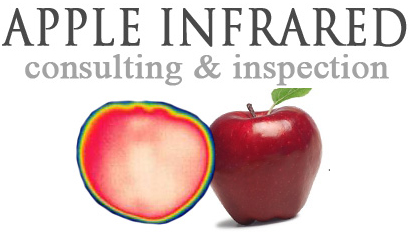Why an EIFS Inspection by a St. Louis Exterior Design Institute Certified inspector using EIFS inspections tools including Infrared Thermography?
A properly trained St. Louis EIFS inspector may be the only solution homeowners have in determining the condition of the exterior of their home. Failure to detect problems can result is serious financial loss to the homeowners. This inspection service can generate peace of mind for the customer.
Home inspectors disclaim the EIFS portion and refer homeowners to a trained EIFS inspector. Many real estate professionals will not list an EIFS home, or the home is substantially under-valued because of unknowns.
The insidious nature of this problem is that there is often no outward sign of distress until the structural damage has progressed to a significant stage. It is often impossible to identify moisture problems with an EIFS application visually. This is why several building and inspection organizations have developed protocols for moisture intrusion testing of EIFS clad buildings.
We visually survey the EIFS installation for conformance with industry standards. The level I inspection employs noninvasive moisture detectors to locate potentially wet areas of the building. The Tramex Moisture meter can not be used on EIFS with metal draining plane.
In a level II inspection, the wet areas are then probed directly through the cladding to determine the moisture levels. The probing is essential to determine how severe the damage may be and to recommending an intelligent course of action.
Our reports include descriptions and images of areas requiring maintenance or repairs, recommendations for follow-on inspections or material removal as necessary, and recommendations for future inspections and maintenance.
Apple Infrared also uses IR cameras to aid in locating moisture during our inspections. However, we do not rely solely on the results of the IR inspection to determine whether or not there is moisture trapped in the walls. Infrared Cameras are very sensitive to weather conditions (the best images can often be taken only for an hour or so after sundown), and to normal wide variations in field conditions. IR cameras can be very useful scanning tools, but again, you only know for sure how much water and damage may be behind the system by inserting probes and measuring it.
Problems with St. Louis EIFS Synthetic Stucco
The basic problem is the belief that homes can be water proofed. The simple truth is, they cannot. Even when professional applied, all caulked joints will eventually fail. No residential windows are fully “water proof”; they are designed and manufactured to water resistant standards.
When moisture gets behind EIFS, it is trapped behind the coating. Trapped moisture inside of the exterior walls contributes to the decay of structural lumber (OSB). A study in Wilmington, North Carolina found that builders frequently installed the material incorrectly or home owners failed to maintain it properly. Although this problem was first found in North Carolina, it is a national problem.
EIFS construction has:
Higher probability of installation and moisture intrusion as reported by NAHB (National Association of Home Builders).
Windows, doors, electrical outlets
Roof flashings
Deck flashings
Below grade installation areas
Projections and vents
Potential mold problems
Possible insurance considerations
Potential for loss of property value
Serving the St. Louis Metro Area, including St. Louis, St. Charles and Jefferson counties.
Level 1 Thermography Certification ITC
Level 1 Building Diagnostic Certification ITC.
Carson Dunlop Commercial Building Inspection Certification
ASHI Certified Inspector
Exterior Design Institute EIFS Certification “MO – 050”
FAA Certification – sUAS Drone Pilot
Sorry, no records were found. Please adjust your search criteria and try again.
Sorry, unable to load the Maps API.


